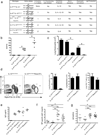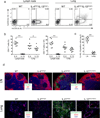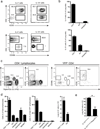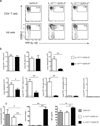Divergent expression patterns of IL-4 and IL-13 define unique functions in allergic immunity
- PMID: 22138715
- PMCID: PMC3242938
- DOI: 10.1038/ni.2182
Divergent expression patterns of IL-4 and IL-13 define unique functions in allergic immunity
Abstract
Interleukin 4 (IL-4) and IL-13 are critical for responses to parasitic helminthes. We used genetically engineered reporter mice to assess the temporal and spatial production of these cytokines in vivo. In lymph nodes, IL-4, but not IL-13, was made by follicular helper T cells (T(FH) cells). In contrast, tissue type 2 helper T cells (T(H)2 cells) produced both cytokines. There was also divergent production of IL-4 and IL-13 among cells of the innate immune system, whereby basophils produced IL-4, whereas innate helper type 2 cells (Ih2 cells) produced IL-13. IL-13 production by T(H)2 and Ih2 cells was dependent on the transcription factor GATA-3, which was present in large amounts in these cells, and in contrast to the small amount of GATA-3 in T(FH) cells and basophils. The distinct localization and cellular expression of IL-4 and IL-13 explains their unique roles during allergic immunity.
Figures








References
Publication types
MeSH terms
Substances
Grants and funding
LinkOut - more resources
Full Text Sources
Other Literature Sources
Medical
Molecular Biology Databases
Miscellaneous

